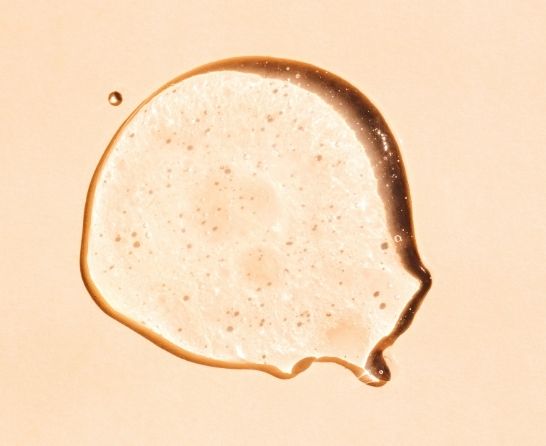Home > Female Body > Menstrual cycle > Cervical mucus: How it changes during your menstrual cycle

 Written by
Maslowski, MBChB, PGDipOMG
Written by
Maslowski, MBChB, PGDipOMG

Have you ever noticed that your cervical mucus, AKA vaginal discharge, changes throughout your cycle? Well, that’s totally normal, and it’s all down to your hormones, and more specifically, your reproductive hormones. Here’s how it all works.
At its core, cervical mucus is the fluid produced by your cervix. It forms most of what you see in your vaginal discharge, but they aren’t the same thing. The problem is, people often use the terms vaginal discharge and cervical mucus when they’re talking about both. Or either.
Here’s why that’s problematic. While all the discharge that exits through your vagina can technically be called vaginal discharge, vaginal discharge can also mean the fluids, cells, and bacteria produced and ejected by your vagina. Whereas cervical mucus is produced, you guessed it, in your cervix, and joins your vaginal discharge on the way out. It has lots of functions and some of these are specific to each stage of your menstrual cycle.
Cervical mucus is affected by your hormones, so it changes throughout your cycle as your hormones rise and fall. It can also change if you use hormonal birth control, including the Pill.
Vaginal discharge can also change if you have an infection or a disruption to the bacteria in your vagina. If you notice that your discharge starts to smell funny, you notice burning or stinging or you think something isn’t right, please see a doctor or sexual health practitioner to check.
Throughout your menstrual cycle, cervical mucus changes in color, volume and consistency, and texture. And that’s all down to the hormones your body is producing. Here’s how it works during each phase of your cycle.
During your period there’s generally more blood than cervical mucus, so chances are, you won’t notice any. Technically, though, your body is still producing it. So, towards the end of your period, you might see red/brown discharge, and that’s cervical mucus mixed with a smaller amount of blood.
Just after your period, you might notice a few days without much discharge. Later in the Follicular phase, however, your discharge might increase in volume and become more sticky. At this time, it’s usually white or cloudy, but may also be slightly yellow.
You’re likely to experience the biggest increase in mucus volume around the time you ovulate. It’ll also become thin and slippery and is often compared with raw egg white. The function of this mucus is to make it easy for sperm to travel up through the cervix, while also keeping it safe and intact should it bump into an egg.
Once ovulation is over and you enter the Luteal phase, one of two things might happen. You may notice less mucus, or your mucus might get thicker and more sticky. This mucus is there to help protect the inside of the uterus as well as any potential new human you might be baking. It’s thicker and stickier in order to help prevent normal bacteria from your vagina, or, ahem, more sperm, getting through.
Well, that’s a good question. And there are several really good answers. The most important is infection. Your cervical mucus, or your discharge in total can point out when something’s not right. Aside from an odor, infection can change the color and consistency of mucus and discharge, so getting familiar with it is a good idea.
Then there’s tracking and monitoring your hormones, something we know a little about. As we mentioned, mucus can help nail down which phase of your cycle you might be in, so recording when and how it changes can be really useful. Cervical mucus can also change when you’ve got an underlying hormone imbalance, which is why tracking is crucial. The Hormona app was designed for this exact thing, so get downloading.
But cervical mucus can also be part of your natural family planning toolkit, if your goal is conception. With specialist help and training, cervical mucus, alongside a host of other factors could indicate when ovulation is imminent. All of which means that your mucus is a vital part of your menstrual health, and well worth paying attention to.
Disclaimer: This website does not provide medical advice. The information, including but not limited to, text, graphics, images, and other material contained on this website is for informational purposes only. No material on this site is intended to be a substitute for professional medical advice, diagnosis, or treatment. Always seek the advice of your physician or other qualified healthcare provider with any questions you may have regarding a medical condition or treatment, and before undertaking a new healthcare regimen, and never disregard professional medical advice or delay in seeking it because of something you’ve read on this website.


-


Dr Singh is the Medical Director of the Indiana Sleep Center. His research and clinical practice focuses on the myriad of sleep.

What is estrogen and why is it important? Estrogen is one of the main sex hormones responsible for menstrual cycle regulation. It prepares your uterus for pregnancy and affects breast tissue development. But it isn’t just your reproductive system that

Perimenopause and fertility: What you need to know After mid 40, many women start the transition to menopause, this stage is called perimenopause. This is the time when your hormones start to behave differently and fertility decreases. Whether you already

The role of hormones in perimenopause Throughout your menstrual cycle, you experience normal hormonal fluctuations that are responsible for proper bodily functions like ovulation and menstruation. However, once you enter perimenopause, your hormone fluctuations change. As ovaries become less responsive
Privacy Overview
| Cookie | Duration | Description |
|---|---|---|
| cookielawinfo-checkbox-analytics | 11 months | This cookie is set by GDPR Cookie Consent plugin. The cookie is used to store the user consent for the cookies in the category "Analytics". |
| cookielawinfo-checkbox-functional | 11 months | The cookie is set by GDPR cookie consent to record the user consent for the cookies in the category "Functional". |
| cookielawinfo-checkbox-necessary | 11 months | This cookie is set by GDPR Cookie Consent plugin. The cookies is used to store the user consent for the cookies in the category "Necessary". |
| cookielawinfo-checkbox-others | 11 months | This cookie is set by GDPR Cookie Consent plugin. The cookie is used to store the user consent for the cookies in the category "Other. |
| cookielawinfo-checkbox-performance | 11 months | This cookie is set by GDPR Cookie Consent plugin. The cookie is used to store the user consent for the cookies in the category "Performance". |
| viewed_cookie_policy | 11 months | The cookie is set by the GDPR Cookie Consent plugin and is used to store whether or not user has consented to the use of cookies. It does not store any personal data. |
